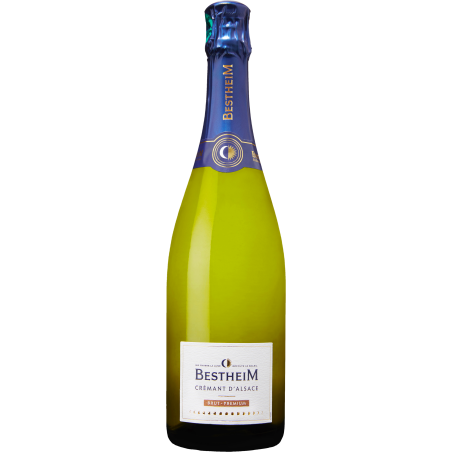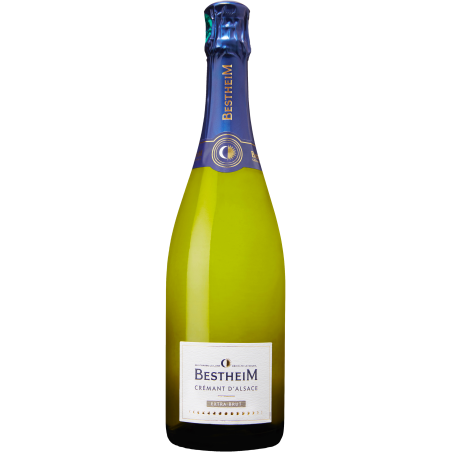
Which is the difference between a Crémant d'Alsace and a Champagne?
Synonymous with festivities and celebrations, sparkling wines are often the guests at aperitif time with family or friends, or for dessert. Among the wide range of sparkling wines internationally, two appellations coexist on French territory: Champagne and Crémant. We help you to see more clearly and understand the main differences between these two exceptional beverages.
The terroir: the first difference between Champagne and Crémant
The main difference between a Crémant and a Champagne is the origin of its region of production. Both benefiting from an Appellation d'Origine Contrôlée (AOC), their production is highly regulated.
Champagne can only be produced in the Champagne region on terroirs well defined by the Appellation.
As for the Crémant, it is a sparkling wine that can be produced in 8 French wine regions: Bordeaux, Alsace, Burgundy, Jura, Die, Limoux, Loire and the Grand Duchy of Luxembourg.
The Crémant d'Alsace has had an AOC since 1976. Crémant d'Alsace comes from grape varieties grown in the AOC Alsace area, particularly in the communes of Barr, Bennwihr, Eguisheim. Ingersheim, Riquewihr, Wintzenheim and Katzenthal. Sparkling wines with the appellation "Crémant d'Alsace" are obligatorily bottled in Alsace.
Grape varieties used for the Crémant d'Alsace and Champagne
In Champagne, three grape varieties are very largely in the majority: Pinot Noir, Meunier and Chardonnay. The Pinot Noir and the Meunier are black grapes which can enter in the composition of the White Champagne as in that of the Rosé Champagne. Indeed, for the wine making of Champagne Rosé, these grape varieties are going to be macerated in order to bring the color to the wine. Other grape varieties are also authorized but they represent less than 0.3% of the vineyard: Arbane, Petit Meunier, Pinot Blanc and Pinot Gris.
In Alsace, the list of authorized grape varieties is wider for this sparkling wine: Pinot Blanc, Pinot Noir, Pinot Gris, Riesling and Chardonnay can be used to make Crémants d'Alsace. The indication of the grape variety is mandatory on the bottle of Crémant if the Crémant is made of only one grape variety.
The production technique
It is not often easy to tell the difference between a Crémant and a Champagne by the aspect of their dress or during tasting. Indeed, they can be very similar.
This is explained by the fact that they are both elaborated according to the Champagne method. This is rather called "traditional method" for the Crémant in order to respect the Champagne Appellation.
The traditional method or méthode champenoise
After a first fermentation in vat, a liqueur de tirage (sugar and yeast solution) is added to the cuvée before bottling.
This will allow a second fermentation in the bottle thanks to the action of the yeasts. The sugar brought by the liqueur de tirage is transformed into alcohol with the production of carbon dioxide. This is called the prise de mousse.
The sparkling wine is then matured on laths for a longer or shorter period of time. For Champagne, the maturing time is a minimum of 12 months. For the Crémant d'Alsace, it is generally between 9 and 12 months.
This more complex vinification, added to the choice of grape variety(s), may explain the differences in taste when tasting a Champagne compared to a Crémant.
A question of price, but not of quality!
Champagne is considered the luxury wine par excellence, so it is more expensive than Crémants and other sparkling wines. The cost of the grape is more important in this region. The price of a bottle of Champagne can range from a minimum of 15 euros to more than a hundred euros for the most prestigious.
The Crémants d'Alsace can be found at all prices. From a few euros a bottle to about twenty euros. There are many quality Crémants at very affordable prices. Several of our Crémants have been rewarded and recognized for their great finesse. In 2016, our Crémant Grand Prestige Rosé 2014 distinguished itself at the international competition of the Best Sparkling wines of the World and won the first place on the podium. The success story of Crémants d'Alsace Bestheim continues to be written every day...



